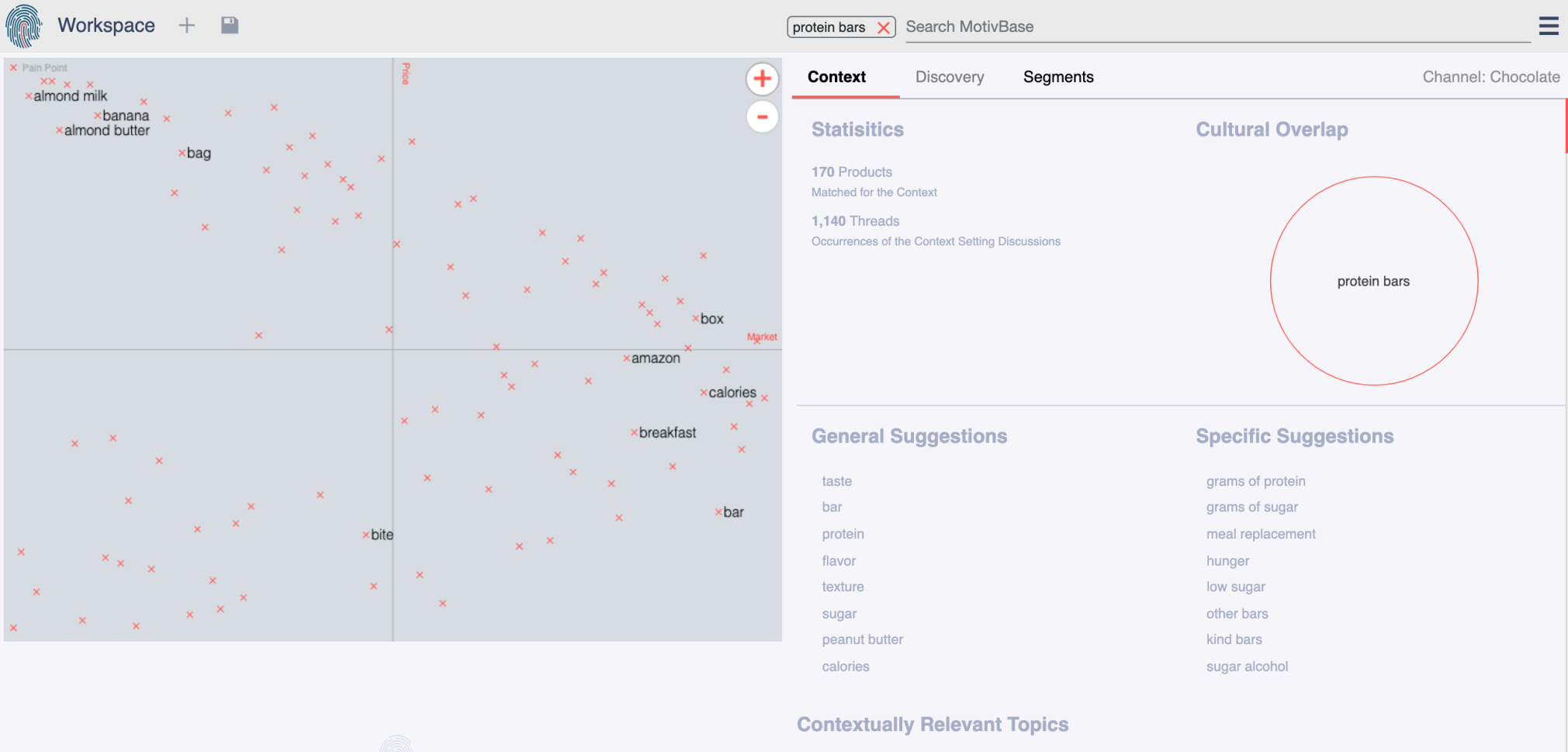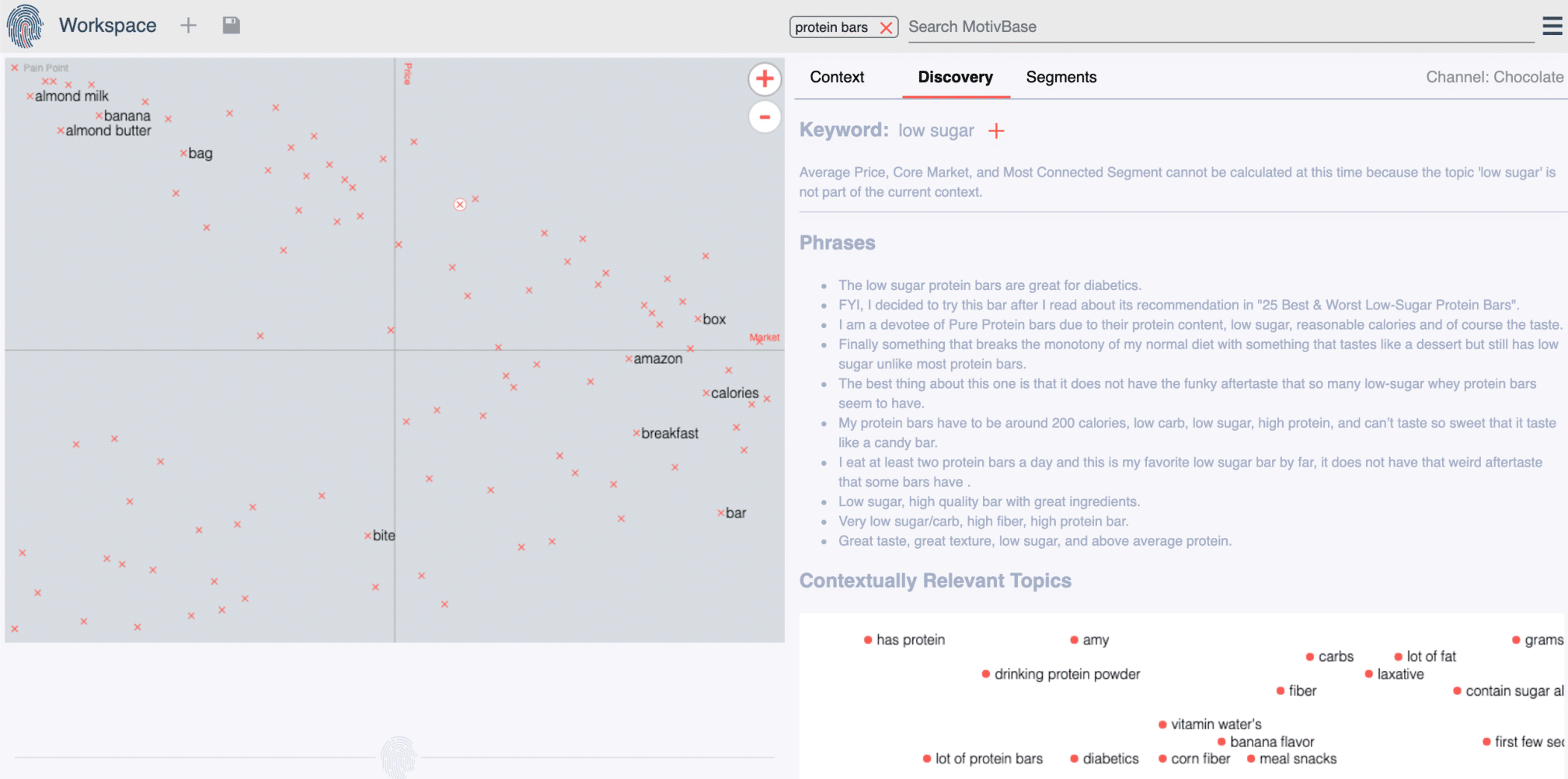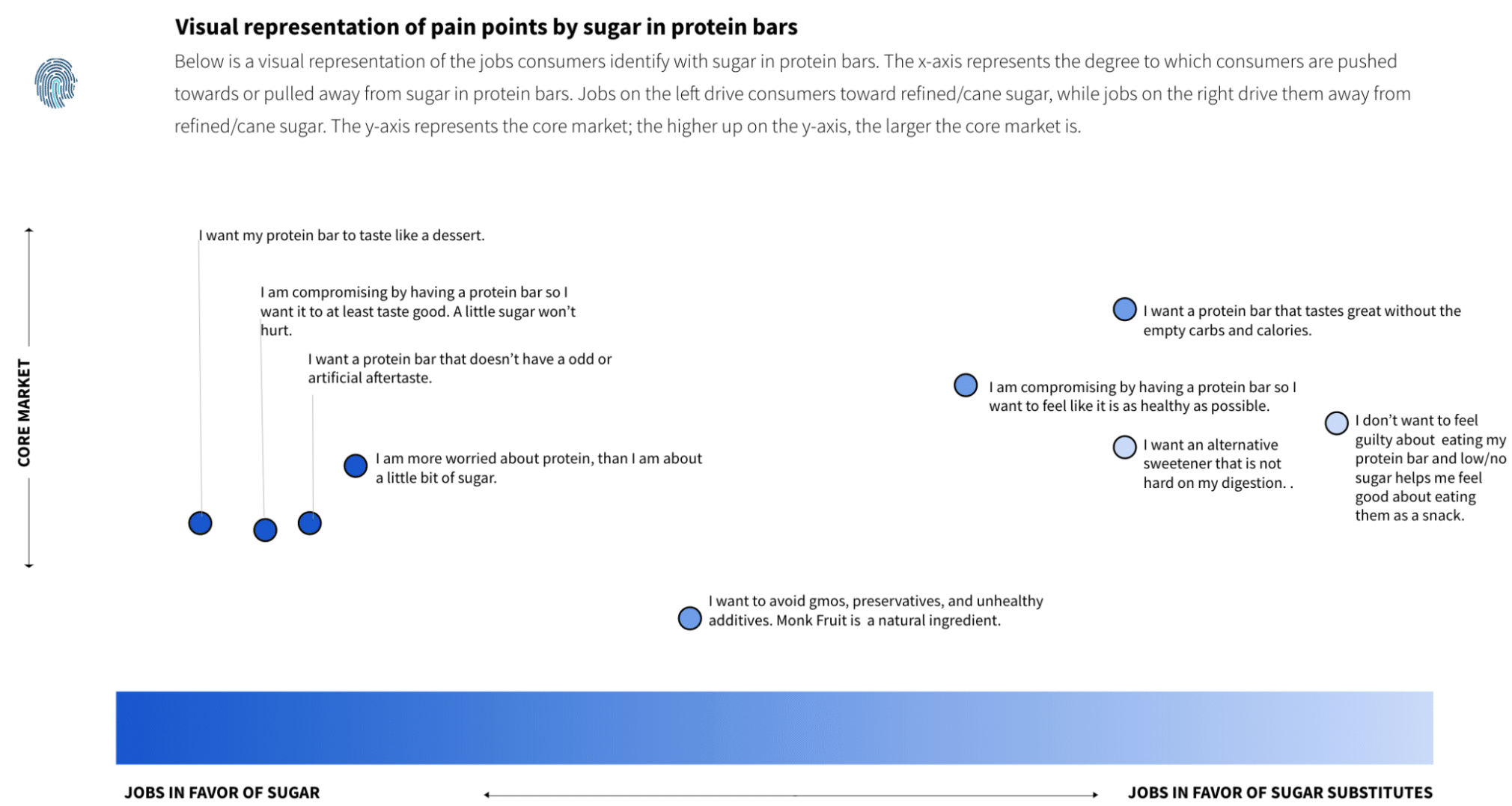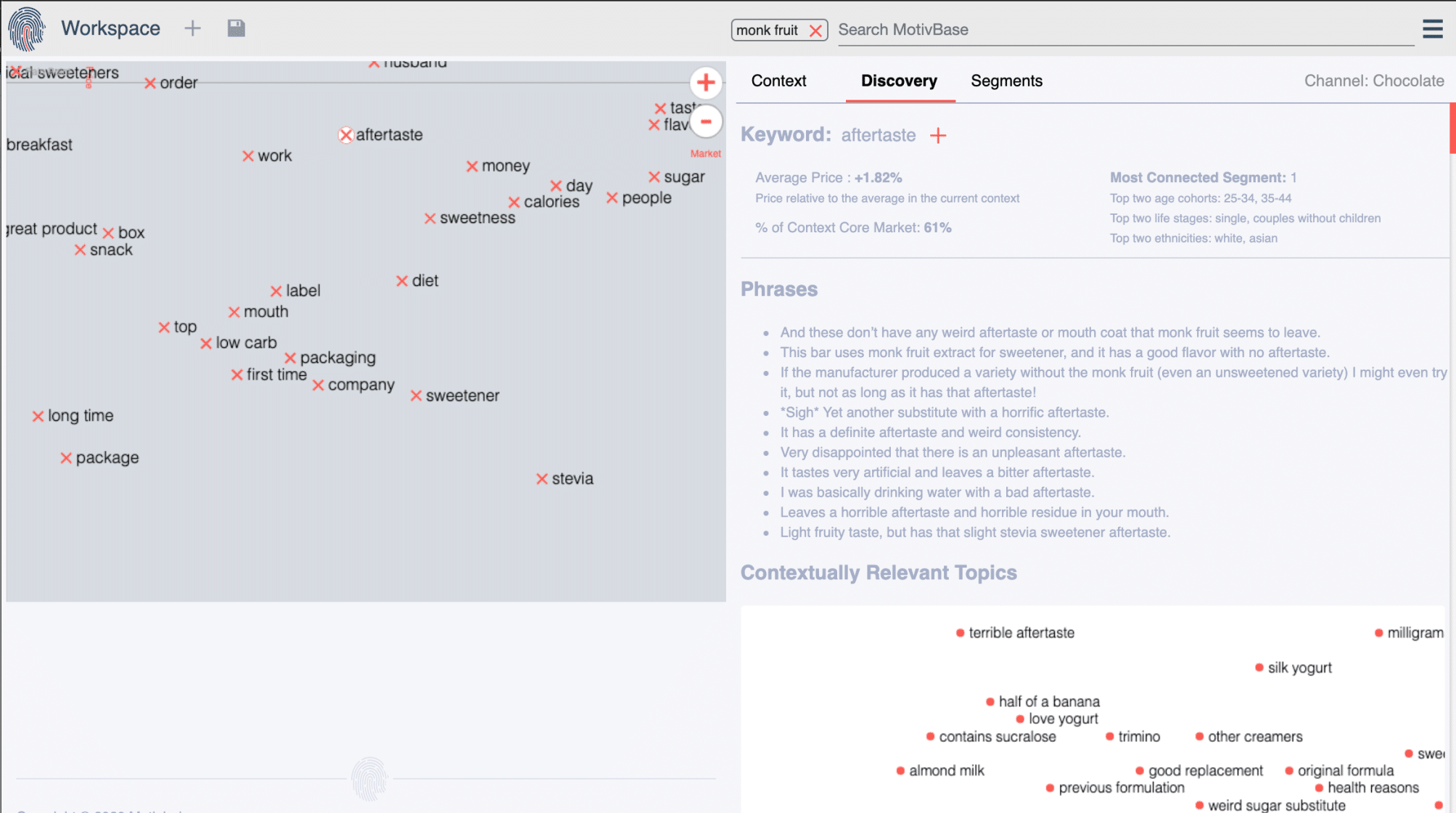
According to Whole Foods, the year 2020 will see the rise of syrups made from monk fruit, pomegranates, coconut or dates. The reason? These are solutions that can replace sweeteners made from typical sugars, stevia, honey and maple syrup. But as consumer insight teams, R&D teams and marketing professionals consider how this will impact their product lines, one question jumps out at me:
Is this an industry-perspective or is this a trend that will truly resonate with consumers?
Understanding the potential impact of changing a product is one of the key business problems our PhD Social Scientists are asked to solve using our MotivBase Jobs Platform.
While many of our clients leverage the platform to do Jobs To Be Done work, the tool, at its core, can identify and measure consumer pain points by analyzing vast amounts of product review data.
By sizing these pain points, and looking to how consumers are expressing improvements they want to see in a product, we can identify the pros of and cons of potentially changing everything from taste, to texture, to the ingredients and their benefits. \
Let’s say we are a company that manufactures PROTEIN BARS that contain chocolate. You are seeing brands like Bhu increasingly drawing attention to how they are leveraging alternative sweeteners like monk fruit and you want to understand if you should consider replacing the traditional sugars and sweetening options with these new and emerging alternative solutions.
The first thing we would do is look at the consumer-led pain points that emerge in the culture of protein bars.

The system looks at over 170 products and analyzes consumer reviews to group and rank the different pain points that emerge when consumers are explaining why they love or struggle with a product.

We can quickly see that “taste” is critical. Not only dominant in the General Suggestions, but if we zoom in on the upper right quadrant to focus on pain points that are both relevant to larger portion of the population and pain points that consumers are willing to pay more to solve, “Great Taste” is present.
37% of Protein Bar consumers are interested in solving the problem of taste, and they are willing to spend 6.85% more than the average cost if a product solves this problem.
When we start to look at the consumer-led perspectives linked to the pain point of finding a protein bar that satisfies the consumer’s taste criteria, sugar (and finding products with reduced or low sugar) is dominantly voiced by the consumer. In order to better understand how relevant sugar is, we now ask the system to zoom in on the specific culture of Protein Bars and Great Taste. “Low Sugar” is a naturally emerging pain point that we can explore.
While we see the typical challenges with sugar, things like high in carbohydrates and calories the more relevant insight to this archetype is this:
Consumers are linking low sugar solutions to an unpleasant aftertaste and seeking out solutions that solve this problem.
After only 10 minutes in the tool, we are starting to better understand the tension in the marketplace. Consumers want lower sugar alternatives. They are willing to pay more for them. But some of the solutions like erythritol can cause digestive issues, and sucralose can be the culprit behind that unpleasant aftertaste noted above.
So can an ingredient like Monk Fruit solve this problem? Would making the monumental investment in replacing one ingredient with this new ingredient be justified?
Perhaps. Consumers are already incorporating monk fruit into their own cooking and questioning why it is not being used more prominently in protein bar recipes. But even when praising monk fruit consumers are calling out “after taste”.

In order to further understand the impact this ingredient may have, we zoom out to remove the context of protein bars and look at the pain points that exist around monk fruit itself.
We can immediately see that aftertaste is an issue, as it appears multiple times in our search. Not only that, we can see that there is a “love/hate” relationship with the flavor. Some feel it carries with it a similar artificial flavor and has an unpleasant and recognizable flavor note. Some claim to love the taste. But for many, it is a disappointing and even “horrific” addition.
At its best, it is a compromise.
Conclusion:
In a typical project, we would map 9-10 “jobs” or pain points in the context of protein bars, and chart them on a spectrum. On the left we would plot “jobs in favor of refined sugar” on the right we would plot “jobs in favor of monk fruit and other natural sugar substitutes”.

In less than a 5 day period our team can take a complex question like “Should we be replacing a sweetener in our product?” and come back with the consumer-led perspective to assure that you have a deeper understanding of the impact this decision may have and how it may be received.
In this instance, while we do see growing interest in monk fruit, our question to the client would be can you make the switch while managing the consumers reaction to any aftertaste that may result from the change in formulation. There are rational and logical reasons on why the consumer should be open to this change. But the emotional reward that comes with eating protein bars is tied deeply to taste.
In this situation, our client was able to better understand where it’s current brand sat, and how the jobs it was solving for the consumer made it too risky to make a change.
Instead of changing the product, they pivoted, to evaluate a new brand to solve for consumers on the right of the spectrum. The maintained the current formulation in their product, and avoided the potential customer backlash with an a change in ingredients that likely would have upset their existing customer base.


